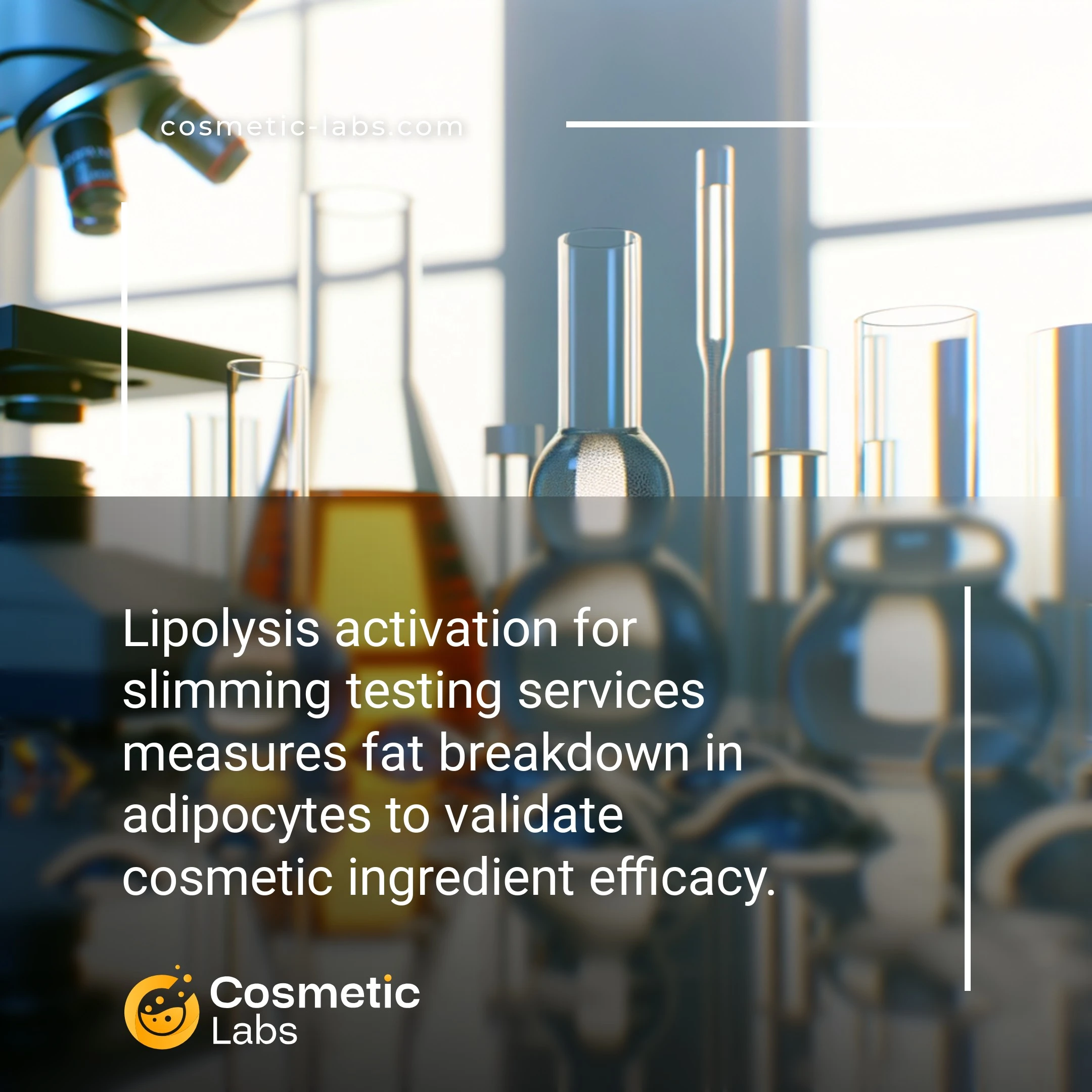Lipolysis Testing Services for Slimming Product Efficacy

What is Lipolysis activation?
Lipolysis activation testing for slimming products is a preclinical laboratory service that measures how cosmetic ingredients trigger fat breakdown in adipocytes (fat cells). Our partner labs use enzymatic assays and cell culture models to quantify glycerol release—a direct marker of fat metabolism—helping you validate slimming claims with scientific data. This testing typically shows results within 24-72 hours of ingredient exposure, giving you concrete evidence for product efficacy before market launch.
Why do you need this service?
Cosmetic labs on our platform help brands validate anti-cellulite cream formulations by measuring fat cell breakdown in controlled laboratory conditions. Teams submit prototype formulas containing caffeine, retinol, or botanical extracts to determine which concentrations actually trigger lipolysis in adipocyte cultures. This testing reveals measurable fat reduction percentages that support marketing claims and regulatory submissions, letting you confidently launch slimming products backed by scientific data rather than guesswork.
Who provides Lipolysis activation services?
All cosmetic labs providing Lipolysis activation services
There is no company providing these services at the moment.
Lipolysis Activation Testing for Slimming Products
Lipolysis activation testing measures how effectively your slimming formulations trigger fat breakdown in adipocytes. This preclinical analysis validates your product’s ability to stimulate the cellular mechanisms that release stored lipids from fat cells.
In Vitro Lipolysis Assays
Labs use cultured adipocytes to test your formulation’s impact on fat cell metabolism. These assays measure glycerol release and free fatty acid production to quantify lipolytic activity. Testing protocols typically run 24-48 hours with multiple concentration points.
Key measurements include:
- Glycerol concentration in culture media
- Free fatty acid levels
- Cell viability assessments
- Dose-response curves
Results help you optimize active ingredient concentrations and validate efficacy claims for regulatory submissions.
Enzymatic Activity Analysis
Testing services examine how your ingredients affect hormone-sensitive lipase and other key enzymes in the lipolysis pathway. Labs measure enzyme activity levels and gene expression changes in treated adipocytes compared to controls.
This analysis reveals:
- Mechanism of action for your active ingredients
- Optimal formulation pH and stability requirements
- Potential synergistic effects between ingredients
Connect with specialized labs on our platform to discuss your slimming product testing needs and receive detailed protocols tailored to your formulation goals.
Practical Applications of Lipolysis Activation Testing for Slimming Products
Beauty brands rely on lipolysis activation testing services to validate fat-burning claims and optimize ingredient concentrations in their slimming formulations.
Body Contouring Cream Development
Cosmetic labs test active ingredients like caffeine, carnitine, and forskolin using adipocyte cell cultures to measure fat breakdown rates. Teams analyze lipolytic enzyme activity through glycerol release assays, tracking results over 24-48 hour exposure periods.
This data helps brands determine optimal concentration ranges for their formulations. Labs typically test 3-5 ingredient combinations simultaneously, providing comparative efficacy data that guides final product composition decisions.
| Testing Method | Measurement Parameter | Typical Timeline | Key Output |
|---|---|---|---|
| Glycerol Release Assay | Fat breakdown rate | 24-72 hours | Lipolytic activity percentage |
| Hormone-Sensitive Lipase | Enzyme activation | 4-8 hours | Enzymatic response levels |
| Adiponectin Expression | Metabolic regulation | 48-96 hours | Gene expression changes |
Anti-Cellulite Product Validation
Labs evaluate anti-cellulite ingredients through specialized protocols that measure both lipolysis activation and collagen synthesis inhibition. Testing focuses on compounds like retinol, aminophylline, and botanical extracts known for their fat-mobilizing properties.
Results include dose-response curves showing ingredient effectiveness at different concentrations. This testing reveals the minimum effective dose needed for measurable fat cell volume reduction, helping brands balance efficacy with cost considerations.
Contact cosmetic testing labs on our platform to discuss your specific lipolysis activation testing requirements and timeline needs.